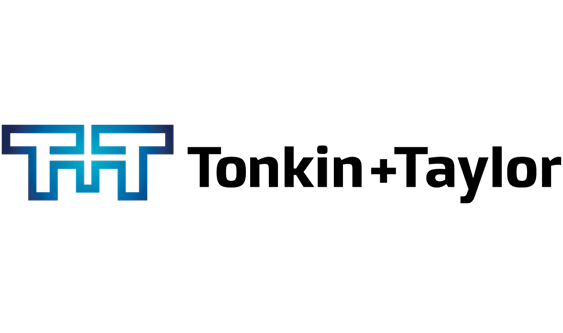Āpōpō is proud to be a member of IFME – the International Federation of Municipal Engineering. Below is a fantastic article by John Milne, an APWA member from California. John spoke at Inspiring our Next Generation in June as a Jennings Randolph Fellowship recipient.
Originally published by IFME

“Back-to-basics sustainability”
How we practitioners can fill the gaps in our infrastructure delivery systems to make our communities more sustainable
John Milne, Clark County Public Works, USA
The increasingly severe effects of climate change are alarming. We are fortunate to have many scientists working on exciting new technologies, such as nuclear fusion, that can potentially be game-changers in the quest for sustainability. But as engineers responsible for designing, constructing and maintaining the built environment that largely determines our future, have we done all we can to ensure our communities’ sustainability?
This article asks municipal engineers and asset managers to consider how they might develop a holistic, “back-to-basics sustainability” strategy, to make simple improvements to their day-to-day engineering and asset management systems to maximize their contribution, as practitioners, to their community’s long term sustainability.
Purpose
Back-to-basics sustainability tries to ensure that there are no logical inconsistencies or gaps between how physical processes actually function and how all our resources are managed and administered. We’re seeking to discover new practices and combinations of practices that have not yet been identified or implemented, while at the same time improve the effectiveness of existing best management practices.
We want to develop holistic management systems that no longer discount “externalities” that can impact our natural resources, and that also work smoothly and effectively together so that they might rightly be considered to be “more than the sum of their parts” from an efficiency standpoint. There is some urgency to our needs, and so we must try to develop systems that are “as simple as possible, but no simpler”, so that we may move quickly from a well-reasoned, collaborative decision-making process into construction and good on-the-ground results.
Partners in sustainability
Before trying to develop a strategy for a Municipal Engineering Department, we should first acknowledge the valuable contributions of our colleagues in the scientific community and private sector. Below are three key areas our partners are actively involved in that greatly affect our communities’ resource needs and the work we need to do to procure those resources:
Resource demand
The effects of climate change have shown us that it is crucially important to reduce our resource and energy demands. Resource-use-minimization is largely in society’s hands; our citizens can choose to get by with one TV in the home rather than three. However, it is very important that our societal communicators develop ways of facilitating an effective “Needs vs Wants” dialogue to be able to make this happen.
Industry and the Circular Economy
Once our resource needs have been determined, it is up to our industries to supply those needs as efficiently as possible. This inevitably leads us towards discussion of a “Circular Economy”, where goods, once manufactured, are used for the full extent of their useful life then recycled to make another useful product. Here, strategies such as Industrial Symbiosis are showing us the way.
Energy development
Now on energy supply. Here, an exergy-based energy management approach, paired with a thorough pollutant-accounting process, might be effective. Another promising strategy to learn from is Switzerland’s “2000-watt Society” initiative.
Although municipal engineers and asset managers may not be big players or decision-makers in advancing these private initiatives, we should collaborate fully, ask our colleagues how we can help them and, importantly, inform them how they can help us. For example, we strongly prefer to minimize the need for and public expense of environmental cleanup. We’ve also found providing shelter and supporting infrastructure to cope with severe weather events to be increasingly difficult and expensive; asset managers do not like climate change.
Sustainability as Applied Physics
Back-to-basics sustainability treats sustainability as a problem in applied physics, an approach which led to the development of an “entropy-based resource management”1 framework for developing sustainability strategies. The concept can be thought of as the constant effort to create and maintain useful thermodynamic order, in all our resource management activities, at all times. For example, we may harness the sun’s energy in the photosynthesis process to grow crops for food and energy.
Developing and implementing more “orderly” asset management systems is the essence of a back-to-basics approach to sustainability.
Guiding Principle
The back-to-basics sustainability strategy relies upon effective collaboration and making well-reasoned, multi-discipline decisions. There is some urgency to our task, and so, to effectuate prompt action, we would like to develop assessment processes that are “as simple as possible, but no simpler”.
For such an approach to be successful, it must incorporate a good decision-making process. We need a Guiding Principle that is based upon a long record of successful resource management and can serve as a guide not only as to how things interact in a holistic way but why we should even want things, such as a long, happy life for our descendants.
Consider here the example of Aotearoa New Zealand. IFME member, Āpōpō, “is an advocate for creating sustainable communities enabled by public asset management excellence”. Excellence in managing our most valuable asset, Planet Earth, is precisely what we are looking for at this time.
Aotearoa’s Te Ao Maori worldview “acknowledges the interconnectedness and interrelationship of all living and non-living things”, a principle that seems to envision a “built ecosystem” vision where people are actively, effectively employed in supporting the environment they live in. For example, they may elect to use pedal-power rather than motorized transport for those trips where that may provide adequate access to the resources they need and the activities they enjoy.
Te Ao Maori principles employ “Mokopuna decision making” i.e. making decisions with your grandchildren in mind. In engineering terms, this viewpoint might be thought of as designing and developing infrastructure for an extended design life, perhaps a hundred or even hundreds of years. Many senior engineers and asset managers know the value and cost-effectiveness of planning, building and maintaining infrastructure for a longer design life.
Importantly, Te Ao Maori principles are embedded in Aotearoa’s governing Treaty of Waitangi. As such, they have the force of law, are being very actively interpreted and debated at this time, and are beginning to shape environmental policy right at this moment when we all are urgently looking for ways to improve the sustainability of our communities and the world as a whole.
Each country and community can, and should, develop their own guiding principle and may look to their indigenous peoples as a potential source of deep experience and wise counsel with a good track record of successful management of the local environment and resources.
Infrastructure Coordination Group
Perhaps the simplest improvement for an engineer or asset manager to make, and one which should immediately result in cost savings and improved infrastructure construction, might be the formation of an Infrastructure Coordination Group within your Engineering Department. This small group of senior employees would be charged with achieving economies of scale, sharing project management costs and generally lowering unit rates for construction bid items; all outcomes which would help meet the often-heard request to “do more with less”.
Coordination can be as simple and informal as wandering down the corridor and asking if there’s anything you can fix for your Drainage Division while you’re designing your road project. Or checking if your stormwater group can partner up with Parks to achieve stormwater benefits within their park design.
Rather than a patchwork of uncoordinated individual projects, all capital infrastructure projects would build everything that needed to be built on that small portion of the planet at the same time, in a “do it once and do it right” project with obvious benefits for the quality and ultimate cost of our public infrastructure.
Sustainable Land Use Plans
Another key strategy is for municipal engineers to help our Planning colleagues with the development of sustainable land use plans2. We know our community needs food, water and other resources to survive and will need to perform a certain amount of work to procure them. So our job is to develop a land use plan and associated infrastructure that will facilitate the efficient procurement and frugal use of all resources.
To accomplish that, our Transportation engineers can minimize the work needed to procure those resources by siting land use types in advantageous locations, then designing our transportation systems so that the most effective energy types can be used everywhere. We can reduce the distance, number of trips, power requirements and ultimately the energy expended moving people from A to B.
Our Water Resources engineers can develop general and location-specific strategies to maximize groundwater and surface water elevations throughout our watersheds. By doing that, they will have maximized water storage and water supplies, at the same time triggering a cascade of watershed and environmental benefits.
By working collaboratively on these strategies, our Transportation and Water Resources engineers will have holistically designed a future “built ecosystem” that optimizes resource management for our community.
Heritage Farm Headwaters Restoration project: “Holistic, watershed-based design that mimics natural systems”
Bypassing the development of large, detailed, expensive watershed plans, Clark County’s Stormwater Capital improvement Program uses simple, qualitative and semi-quantitative assessments to pick the most holistic, multi-benefit, cost-effective watershed rehabilitation projects.
Next year, Clark County will build their first “headwater wetland restoration project”, a new project type for us that we think will be very effective in helping restore our damaged watersheds. Its simple design merges two generalized SCIP strategies; “infiltrate clean stormwater runoff everywhere possible without causing problems” and “pump up the groundwater as high as possible then plant everything”.
Using county Clean Water Program funds and a state grant, the project will construct a large component of the county Parks Division’s Master Plan for their Heritage Farm Preservation site, for which they have been struggling to amass sufficient funds. It helps save this historic site, the old county Poor Farm, from potential redevelopment. This project, and other SCIP projects identified by our back-to-basics sustainability approach, are “win-win-wins” for the water, the land and the people; I’d like to making them candidates for the Te Ao Maori Seal of Approval!
Call to Action
We engineers have always listened to our communities and given them what they need to be safe, healthy and happy. We now know that the built environment that we helped create has allowed dangerous changes to our climate to occur, and so has proved inadequate to meet our goals for our communities and for the global community as a whole. We must do better.
Please consider how your own organization might develop similar holistic, back-to-basics strategies to “fill in the gaps” and “make sure nothing falls through the cracks” in your own quest for sustainability. Try to make your agency function more holistically and become “more than the sum of its parts”, as you work to ensure your community’s continued, enjoyable existence far into the future.
I,2 Additional information and materials on entropy-based resource management can be found at: https://clark.wa.gov/public-works/accreditation
John Milne can be reached at jmilne29@gmail.com
Cover image by wirestock on Freepik














